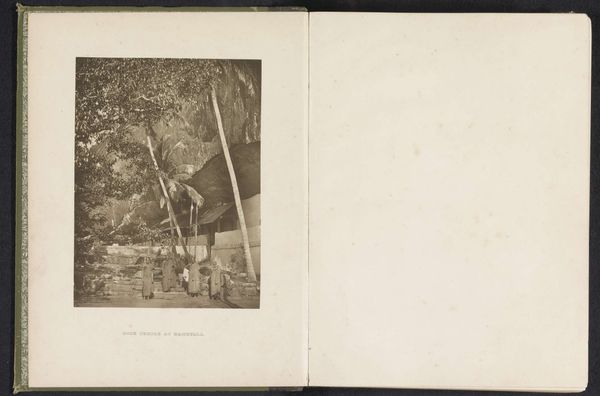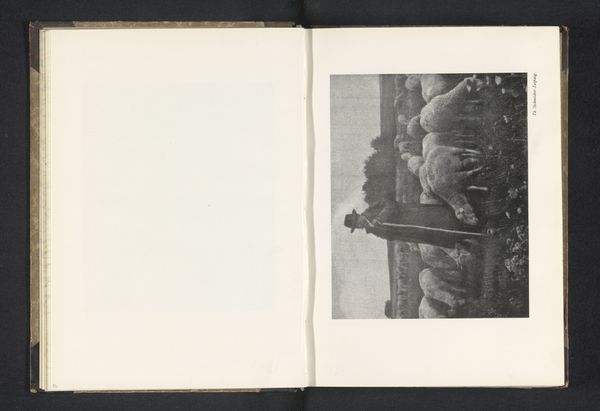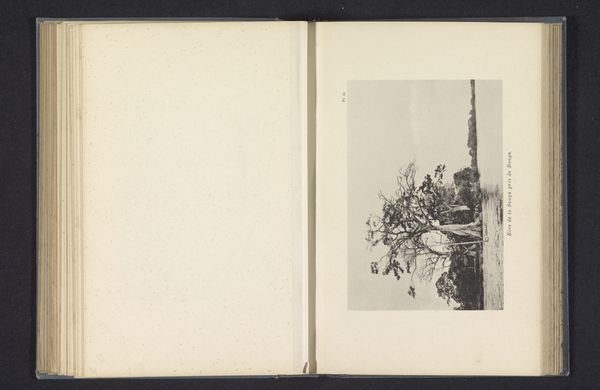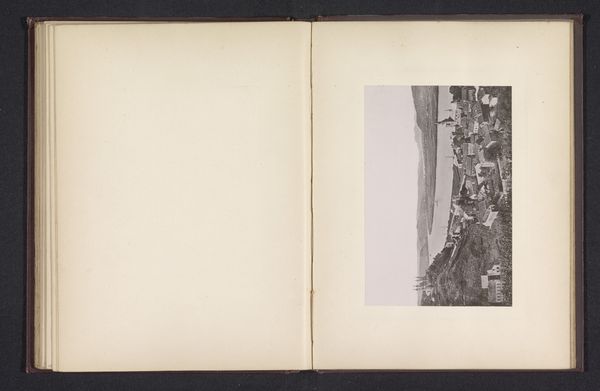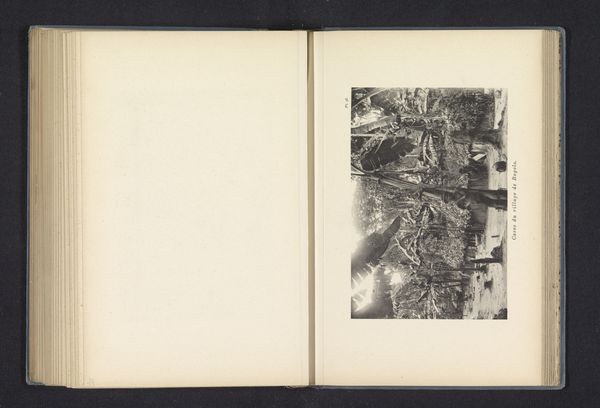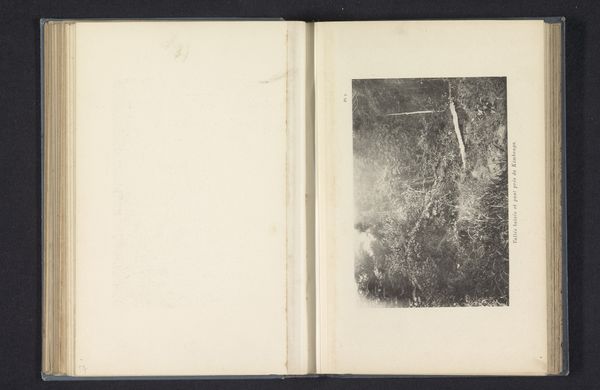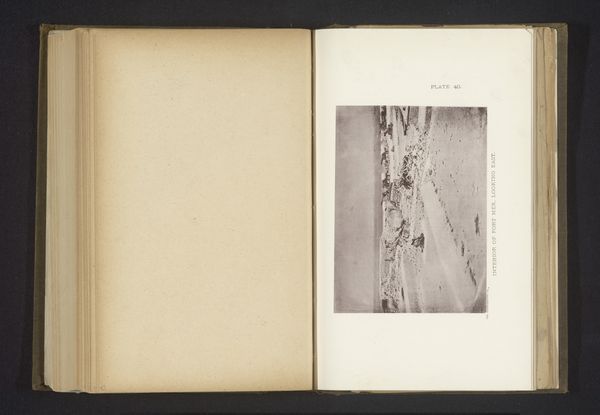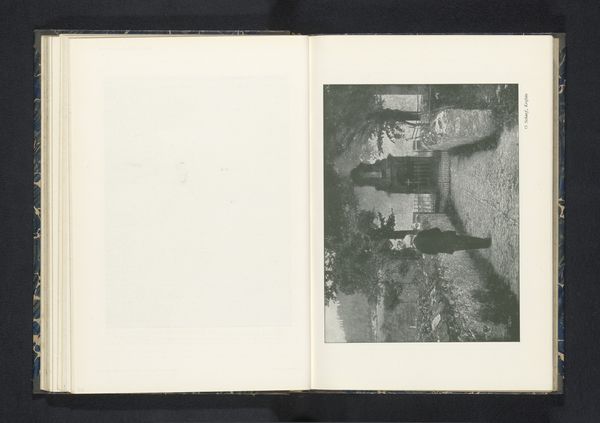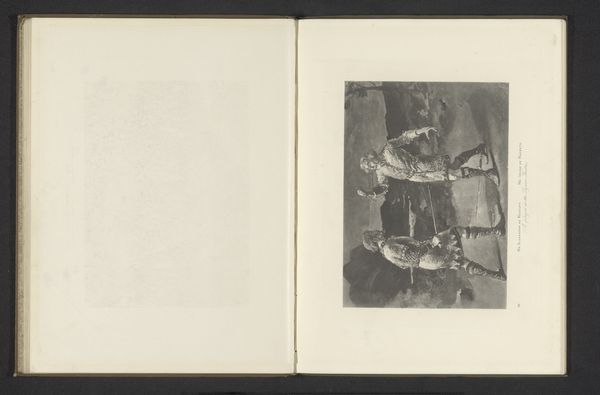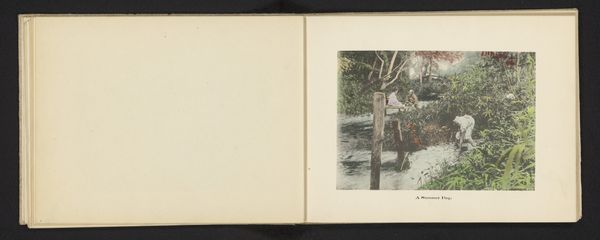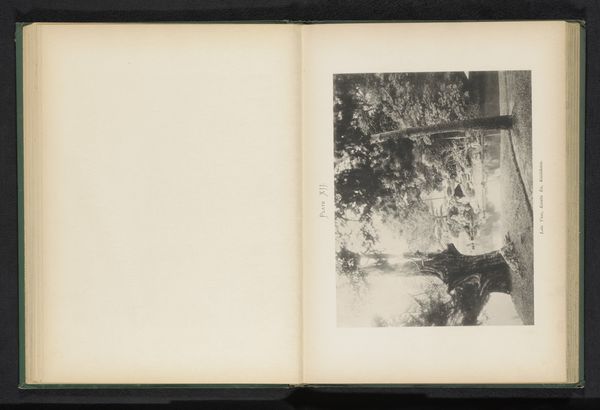
print, photography
# print
#
landscape
#
photography
Dimensions: height 179 mm, width 123 mm
Copyright: Rijks Museum: Open Domain
Curator: This photograph is entitled "Winterlandschap" by H. Bachmann, likely taken between 1902 and 1903. It's presented here as a print, most likely a photograph contained within an album or book. The composition immediately draws the eye to a snowy, upward sloping path. Editor: It's stark, isn't it? Bleak, almost. The high contrast emphasizes the heavy shadows in the snow. The lone railing feels almost menacing in the stillness. It certainly evokes a sense of isolation, perhaps even a comment on the harshness of the season. Curator: Yes, that starkness definitely permeates much of winter landscape photography from this era. Beyond just documenting a scene, the symbolic weight is centered around resilience, dormancy, and introspection often during difficult periods. Consider how this barrenness could also be perceived as cleansing, representing the possibilities inherent in a blank slate or renewal following hardship. The photographic process itself, emerging still in its early form, lends to that kind of quiet reflection. Editor: I wonder, though, about accessibility. The image itself slopes upward significantly, divided by the wooden railing, almost forming a class division, but within a community. Were these snowy hills accessible to everyone or mainly for the wealthy elite during the early 20th century? The barrier also highlights a path with a distinct class element in the access and passage, both practically and figuratively. Curator: That's a very relevant interpretation. The railing, usually there to guide or protect, also serves as a demarcation, doesn’t it? It raises complex questions about access and privilege. Also think about how "Winter" is represented across visual culture, often as something romantic or idealized. Images like these perhaps unintentionally also speak volumes about environmental limitations, socioeconomic constraints, and seasonal migration of both humans and animals that winter often represents. Editor: Indeed. Looking at it through that lens, this simple winter scene becomes so much more than just a pretty picture; it becomes a mirror reflecting our historical and societal anxieties. Curator: I agree. It offers a glimpse into not only a particular time and place, but also into the cultural narratives we project onto nature itself.
Comments
No comments
Be the first to comment and join the conversation on the ultimate creative platform.
